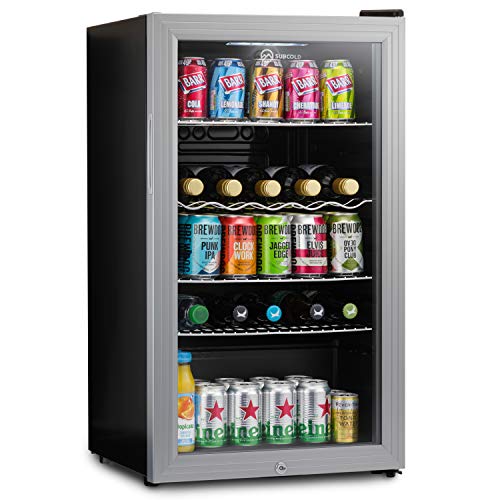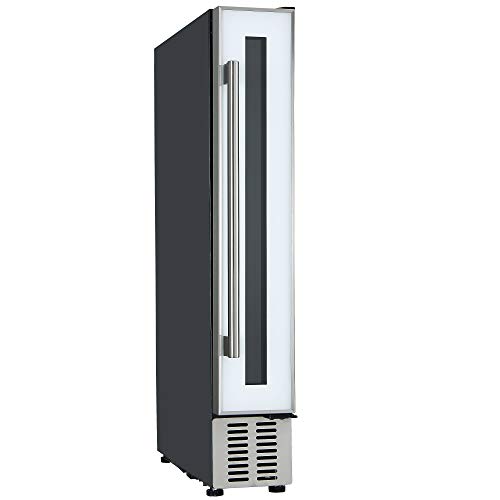Guide To Wine Cooler And Fridge: The Intermediate Guide Towards Wine C…
페이지 정보

본문
 How a Wine Cooler and Fridge Can Help Preserve Your Cabernet Sauvignon and White Zinfandel
How a Wine Cooler and Fridge Can Help Preserve Your Cabernet Sauvignon and White ZinfandelKeep your Cabernet Sauvignon and White Zinfandel at their optimal serving temperatures with wine refrigerators. Some wine refrigerators, like the KitchenAid Undercounter Wine Cellar (R) can regulate the interior humidity to safeguard the labels and wines from mould.
 Traditional refrigerators can be hazardous to your wine's flavour. That's why designated wine fridges are in place.
Traditional refrigerators can be hazardous to your wine's flavour. That's why designated wine fridges are in place.The Ideal Temperature
A wine refrigerator is a fantastic method to keep a selection of wines at the perfect serving temperature, making it easier for you to serve them in the best possible way. The temperature of the top wine fridge needs to be maintained at a consistent and stable temperature to help preserve the flavour and aroma of the wine while slowing down the process of aging. The temperature should be a little lower than room temperature to ensure the wine does not become too cold, which can affect the taste.
The most efficient wine coolers keep temperatures between 54 and 56 degrees Fahrenheit (11.4 and 13.5 Celsius). This temperature range is ideal for long-term storage as it slows down the ageing process and stops the wine from drying. The temperature should not be too high, as it could cause oxidation and other issues.
You can choose to use a single zone wine fridge to store all your wine fridge slim, or purchase a dual zone wine fridge which allows you to separate wine into two zones to better control the temperature. For instance, you can store your red wines in one area and your white wines in the other, so that you can easily serve them at the perfect temperature for each type of wine. This will increase the enjoyment of drinking wine and make it easy to prepare for an event like a cocktail party or dinner. You can simply shift the bottles in the right zone the night prior.
Certain models of wine fridges will come with a user's manual that includes information about the specific temperature settings. It is crucial to read this manual thoroughly to get familiar with the specific temperature control features of your wine cooler. It is also a good idea to check the temperature of your wine refrigerator frequently since it is prone to fluctuation. Keep the wine fridge away from direct sunlight and heat sources to prevent it from overheating. Finally, it is a good idea to avoid opening the wine fridge as this can cause the temperature inside to fluctuate.
Control of Humidity
Humidity is a crucial factor in wine storage. Low humidity levels cause corks to dry out, compromising the seal and allowing oxygen in to enter the bottle. This alters the taste of the wine and can result in off-flavors. High humidity promotes the growth of mold and mildew which can alter the labels on wine bottles. A wine cooler that has humidity control can help to get the best aging possible for your collection of premium wines.
The ideal humidity range is between 50 and 80%. Some wine refrigerators come with a dehumidifying feature that assists in regulating humidity by eliminating excess moisture. This is important as high levels of humidity can affect the quality and readability of wine labels. In addition regular humidity levels can encourage even maturation of your wine collection and encourage the development of distinct flavors over time.
Simple and simple methods for humidification are available for your wine refrigerator. Most often, a small tray with water is set in the bottom of the refrigerator. The water will evaporate over time, increasing the humidity in your wine fridge. You can also install a humidifier that is designed for use in small spaces. Some are energy-efficient and provide an adjustable humidity setting.
Baking soda is a different option. It is a natural substance that absorbs moisture. properties. Simply open a container of baking soda and place it strategically in your fridge to reduce moisture. You can also use silica gel packs, which are commonly used to package electronic products as well as food items. Make sure to change them regularly.
Some wine refrigerators have humidity control systems in them that regulate the level of moisture according to preset parameters. These systems are more accurate than passive methods and can be particularly beneficial when you have an extensive wine storage space with different humidity requirements for various types of wine. Additionally, professional custom wine cellars come with built-in cooling systems which provide a controlled environment to age your wine collection. They are typically best for high-value wines that require a stable and secure environment for aging.
Noise Reduction
Wine coolers wine and fridges are an excellent investment for those who wish to maintain the quality of their wine. When in operation, these appliances can create some noise that could be distracting or disruptive. There are several ways to minimize the amount of noise that these units produce.
Compressor cycling is the primary source of noise in wine refrigerators. This is the process of circulating refrigerant in order to cool the refrigerator's interior, which can cause the fridge to groan and make buzzing sounds. It is therefore essential to put the fridge on a flat, stable surface in order to prevent noise and vibrations.
Internal Vibrations
The rattling and scraping noises that are caused by bottles colliding against each other or the shelves is another typical source of wine refrigerator noise. To lessen the sound make sure the bottles are securely packed and secured to limit movement. It is also helpful to use wooden shelves or racks instead of metal to absorb some of the sound.
The proper ventilation will also lower the volume of noise emitted by the wine refrigerator. It is also crucial to regularly clean the fridge to get rid of dust and other debris that may build up and impede air flow. It is also recommended to put an isolation pad made of rubber underneath the fridge. This will help to isolate it from the hard flooring and minimize any vibrations that could create noise.
Wine refrigerators typically emit between 35 and 45 decibels in normal operation. This is similar to the background noise heard in a quiet suburban house or library and is considered an appliance that has the lowest noise level.
If you're experiencing a wine refrigerator that is producing louder than normal noises, it's recommended to refer to the manufacturer's troubleshooting guide or call a technician for an appointment for repair. This will tell you whether the appliance is operating as it should, or if a more serious issue is present. The technician will be able to identify the problem and fix it if needed.
Versatility
While a fridge is excellent for keeping beverages cool however, if you're looking for a place to store and mature your wine refrigerator mini a regular refrigerator will not provide the ideal conditions to do so. A wine cooler will ensure that your bottles are at their optimal temperature, safe from harmful vibrations and maintains the humidity to a high degree to ensure optimal storage and flavor.
The typical fridge is open several times per day which allows moist air to enter the refrigerator which causes the temperature to fluctuate. This can cause damage to the wine as it takes time for the temperature to return to ideal. A wine fridge however, usually has a lock and fewer openings reducing the temperature and exposure to air. Wine refrigerators are equipped with vibration-absorbing systems that protect wine from damage caused by the vibration of the compressor.
Besides the dangers of temperature fluctuations, a wine refrigerator can also stop unpleasant smells from entering the wine refrigerators for sale bottle due to smells from other foods that are stored in the refrigerator. This could affect the flavor of your wine, as well as create a strong smell on the cork which can leak into the wine.
A wine fridge will also be able to store both red and white wine and have shelves that can hold bottles upright so you can show off their beautiful label art. Some wine refrigerators have dual zone settings that allow you to chill, store and age wine at their individual temperatures. A wine fridge is essential for any home, whether you are a wine collector or just enjoy sharing wine with your friends. You can find them available in a variety of sizes and styles that include freestanding units as well as built-in options. Find the perfect wine fridge here.
- 이전글25 Shocking Facts About Incline Foldable Treadmill 24.09.04
- 다음글Need Inspiration? Try Looking Up Treating Adults With ADHD 24.09.04
댓글목록
등록된 댓글이 없습니다.

